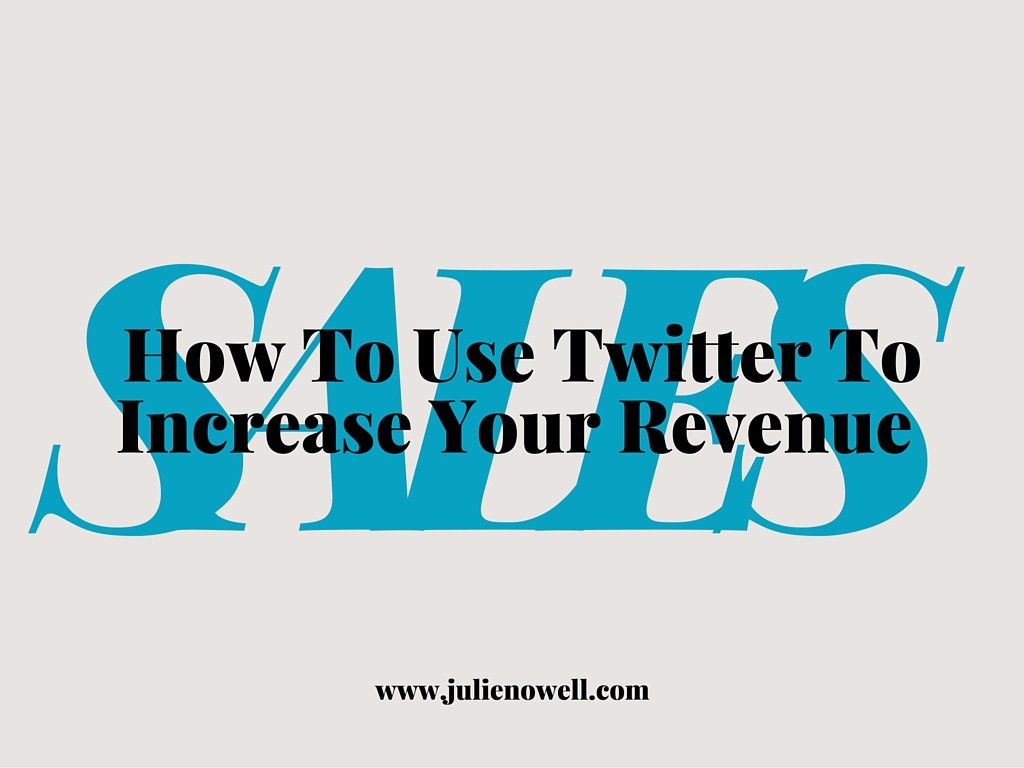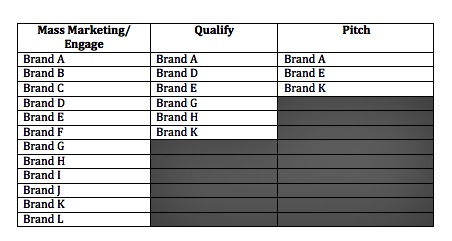Sometimes the simplest sales technique can make ALL the difference to your ability to close with a client. Sales funnels are a common tool used by companies and individuals around the world, and they are a blogger’s best friend when it comes to business management.
Understanding the Sales Funnel
A sales funnel is made up of 3 parts and your goal is to FILL the top level and as you qualify brands and clients, they sift down to the next level. You will see sales funnels in funky funnel shapes, but to simplify, just use a spreadsheet of columns.
You should be starting a fresh sales funnel monthly, but I will also do a specific sales funnel for EACH conference or event I attend. This allows me to focus in on my priorities; vs reacting to what I think “might” be opportunities. Just because it seems like a brand is BEST to work with, doesn’t mean that it will be the best for you. So, use your funnel to commit to the brands you WANT to support, and through that the right opportunity should come.
Mass Market/Engage
At the beginning of every month, or a month before a conference begins, FILL the first column of your funnel with the brand contacts that appeal the most to you. Allot each brand one line. Note their contact info, and any specific details you have about them. Each brand that is given a line is now a priority for you to engage and support in the first week of your active funnel.
Step 1: AUDIT
Take your list of brands in column one and spent 15 minutes per line to explore/audit their online personality. Follow them on social media, visit their website, google them, and see what campaigns they have done. Assess who they are currently working with, and see what similarities those influencers have to each other. This way, you get a good picture of the type of influencer that the brand typically uses, and can see if you are a good match.
Step 2: SUPPORT
You want to provide consistent support and engagement to your list for a week to see if the feeling is mutual. To do this, I create a “secret” twitter list (as opposed to a public one) and add all of the brands from column one to it. I add this list as a column to my hootsuite or tweetdeck. With smaller list I can be aware of ALL the communication they are sharing, and support them when applicable.
Step 3: ENGAGE
Direct engagement with a brand, in a natural and organic way, should start to put you on their radar. (Of course, be sure that your twitter bio states that you are an influencer, and leads them back to your blog.)As soon as the brand begins to engage BACK with you (ie: follows you, asks you direct questions, retweets and supports YOU) you can safely assume that they are interested in progressing your relationship, and time to move them into the NEXT column (column 2)!
If you get no love or notice back, you can and should continue to engage and support.
The Value of the Pre-Qualify
After building relationships with brands on twitter, I will direct message them to request an email contact. My go to line is as follows:
“I have some neat ideas to support your messaging and would love to connect via email.” It is a simple ask, and prepares them for a pitch, or to be open and on the lookout for a pre-qualifying email.
Once you have an email address, provide them with a quick intro of your business, and an option to opt into a pitch or proposal.
“So excited to connect with you after chatting on twitter and I would love the chance to share some of my ideas about supporting the launch of XXXX in a proposal. Please let me know if you would be interested in receiving that, and hearing a few options about how we can work together.”
I keep my pre-qualifying email simple, and to the point. I am not going to spend hours on a pitch for a company that is not interested; by creating opportunities for communication, I have the chance to learn more about the brand and their needs.
One key point here: Keep your communication authentic and real. Use your own personality in your emails, so that the relationship you build is one that will also be represented online when you publish.
If the brand comes back as is open to hearing a pitch, it is time to move them along to the next column (column 3). If not, provide a few notes back about how you hope they will keep you on the list for future opportunities.
Quality Pitching
How we present our products and services should be representative of how we will deliver them, so keep your pitch REAL to you and don’t try to go über corporate if that is not your brand. A pitch should consist of a simple opening that lays the ground work for the client to understand your brand’s value and expertise.
I always provide multiple options when pitching a client, even for a “blog post”. By allowing them to choose their path you put the control of the sale in their hands. They won’t feel cornered into having to go with ONE option, and will have the opportunity to see your range and skills.
Each option is defined by objective, description, deliverables, and cost.
I always leave them with an open ended “hook” to ensure they are aware that these are just a selection of the opportunities for working together. Often I will add in something to the effect of: Of course, if you are interested in reaching a larger market, I can pull together some options for offering an integrated campaign/twitter party etc.
Keep your pitch clean and simple. Attach is as a .doc, or deliver it in the body of an email. Be sure not to overwhelm them with TOO much information, and most importantly, write the pitch to suit THEIR brand and make it specific to their needs.
The Results
Pitches can be accepted on the first throw, or go back and forth for weeks with no conclusion. Your goal is to build relationships with businesses that are open to receiving your services, and that suit your brand’s specific values.
In each column you will lose a few brands, reducing the number as they progress through to the sale. This is totally normal and is to be expected, so don’t worry when a brand says that they aren’t interested.
Here’s the clincher: you need the brands to MOVE SOMEWHERE and not stay stagnant in any column. If at the end of the month they are STILL in column A, it is time to take them out and remove them from your sales objective. If they are a brand you truly love to support, keep supporting them, but do so without conversion in mind.
If you are using the sales funnel for a conference, you might focus on the engage column until after you have made first IRL contact at the event, or the brand relationship could move quickly and you may be able to set up a real life pitch AT the event. Be flexible with the structure of the sales funnel for live events, but don’t forget about using it.
Popping Champagne, just to do it again.
Our last column is sale. This is where you want your best clients to end up, month after month. Closing that sale is the reason we are IN SALES (which we are by the way). It is our celebratory moment. Of course, the moment you have drained your champagne glass, it is time to REFILL your funnel, so the fun never ends.
A healthy sales funnel, with consistent movement between columns, will create a healthy business; all it takes is remembering that it exists and giving it a priority spot on your desk!


